- Home
- MBTI & more tools
- Introduction to Type books
Introduction to Type - the full range of books
Introduction to Type is a best-selling series of books covering MBTI personality type and its different applications.
What are you looking to achieve?
The range of Myers-Briggs Type booklets shows you just how versatile understanding your personality type can be.
The best thing is, you don't need to be MBTI qualified to buy them. If you've reached your MBTI best-fit type with an MBTI qualified practitioner, you can start your own journey of self-discovery in the areas that interest you most.
Get an overview of personality type
Introduction to Myers-Briggs Type (Seventh Edition)

The essential introduction to understanding MBTI results and integrating type concepts into everyday life. Great to follow on from feedback sessions or as a refresher at any time.
English versions have been updated to the seventh edition, including updated type language for easier comprehension of MBTI concepts and a companion website for learning on the go.
English formats (Seventh Edition): Single | 10 pack | eBook
Introduction to Type (Sixth Edition)
If you're working with mixed language groups, you can still present with a mixture of the sixth and seventh editions. The content layout may be different, but the core concept remains the same.
Additional languages (Sixth Edition): Danish | Dutch | Finnish | French | German | Greek | Italian | Norwegian | Polish | Portuguese | Russian | Spanish | Swedish
Improve general workplace efficiency
Introduction to Myers-Briggs Type in Organizations (Fourth Edition)

Understand your MBTI® type in the context of key workplace functions, such as leadership and work styles, problem-solving approach, and how you learn.
English versions have been updated to the fourth edition, including a companion website for learning on the go.
English formats (Fourth Edition): Single | 10 pack | eBook
Introduction to Type in Organisations (Third Edition)
If you're working with mixed language groups, you can still present with a mixture of the third and fourth editions. The content layout may be different, but the core concept remains the same.
Additional languages (Third Edition): Danish | Dutch | Finnish | French | German | Greek | Italian | Norwegian | Portuguese | Spanish | Swedish
Improve teamwork
Introduction to Myers-Briggs Type and Teams (Third Edition)
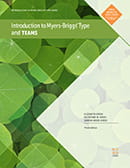
Understand how MBTI® results relate to contributions on a team across six core work issues: communication, team culture, leadership, change, problem solving/conflict resolution, and stress.
English versions have been updated to the third edition, including a companion website for learning on the go.
English formats (Third Edition): Single | 10 pack | eBook
Introduction to Type and Teams (Second Edition)
If you're working with mixed language groups, you can still present with a mixture of the second and third editions. The content layout may be different, but the core concept remains the same.
Additional languages (Second Edition): Danish | Dutch | French | German | Norwegian | Spanish (Latin American) | Swedish
Improve leadership skills
Introduction to Myers-Briggs Type and Leadership

Find a wealth of material on the strengths of leaders of each personality type, as well as areas requiring development, to create a personalised road map for the continued growth of any leader.
Includes a companion website for learning on the go.
English formats (Second Edition): Single | eBook
Improve communication
Introduction to Myers-Briggs Type and Communication

Understand the differences in communication styles whilst getting an overview of communication skills and strategies along with practical tips for communicating with others and areas for personal development.
Includes a companion website for learning on the go.
English formats (Second Edition): Single | eBook
Spanish formats (First Edition): Single | eBook
Manage stress
In the Grip: Understanding Type, Stress and the Inferior Function
This booklet presents comprehensive information on the inferior function, what triggers it, and how it's expressed in different types. This edition also focuses on workplace issues and the effects of long-term stress on employees at all levels within an organisation, based on research and the reported experiences of a stratified national sample of working adults.
Reduce the impact of conflict
Introduction to Type and Conflict

Delve into the mechanics of conflict and pick up concrete and actionable tips to improve collaboration. With reference to the different triggers and responses and a simple model and clear strategies for managing conflict this is an invaluable resource for working with others.
English formats: Single | eBook
Improve decision making
Introduction to Type and Decision Making

We all use different processes to make decisions. By understanding not only our own processes, but those of others, we can create strategies to improve collaboration - leading to more balanced and effective decisions.
Drive innovation
Introduction to Type and Innovation
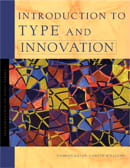
Highlights the differences in how people define innovation, revealing why some phases of the innovation process feel comfortable, while others feel awkward and tiring. It enables you to develop type-friendly techniques that play to individual strengths in the innovation process, and shows how type-stretching techniques enable people to work “out of preference” and bring fresh perspective.
Formats: eBook
Manage change
Introduction to Type and Change
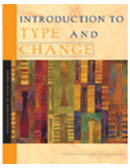
Understand why different people respond in different ways to organizational change. Includes actionable tips, both to help individuals take charge of their own needs and support their colleagues, and to help leaders implement and talk about change in a way that will appeal to all types of people.
English formats: Single | eBook
Work on emotional intelligence
Introduction to Type and Emotional Intelligence

This booklet looks at type in relation to an emotional intelligence framework.
Effectively embed learning
Introduction to Type and Learning
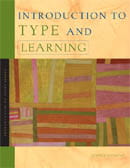
Designed to help adult learners enhance their learning effectiveness, or develop a teaching style that supports others learning from them. Identify the learning styles of the different personality types and use it to develop skills and strategies to maximise knowledge sharing and retention.
Formats: eBook
Improve selling skills
Introduction to Type and Selling

Provides techniques for estimating a client’s ‘type mode’, based on behavioural and language cues.
Formats: eBook
Improve project management
Introduction to Type and Project Management
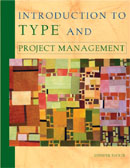
Improve every phase of your project by applying MBTI type principles.
Improve cross-cultural team relationships
Type and Culture

The central notion of this book is that type is universal, but that culture colours how it appears and how it is expressed. Understand where behavioural differences are driven by type, and where they are driven by culture to interpret more accurately what is behind the actions of international colleagues. Can also be used to plan and carry out personal development within different cultures in a way that meets the expectations of participants.
Motivate and retain talent
Type and Retention

One of the notable differences in MBTI types is the different tasks, values and rewards that motivate them. Too many organisations take a one-size fits all approach to employee satisfaction and well-being then wonder why what works for others does not work for them. This book will help you to make a plan that builds incentives tailored to your workforce, and understand how to flex it to attract and retain top talent.
Formats: eBook
Improve coaching skills
Introduction to Type and Coaching

Written as a guide to maximising the impact of coaching experiences, the booklet equips you with an easy-to-follow four-step process for drafting a coaching plan. It includes type insights that will help derive optimal value from each coaching session.
English formats (Second Edition): Single | eBook
Increase job satisfaction
Introduction to Type and Careers

This guide shows how your MBTI results can help you find a career that suits your personality and values. Interactive activities, actionable tips, and insightful type descriptions guide you through each stage of the process, from goal-setting and decision-making to career development and improving job satisfaction.
English formats: Single | eBook
Support career development
Type and Career Development
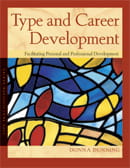
The booklet can be applied to the various steps of career development, and to other developmental situations in which a client is solving a problem, assessing a relationship or looking to change patterns of behaviour. Following the steps outlined in the guide, you will be equipped to help clients gain insight into their own developmental needs, pinpoint aspects of work that they find stressful or uninteresting, find a job match and take real action to achieve their goals.
Understand how and why types react differently
Introduction to Type Dynamics and Development
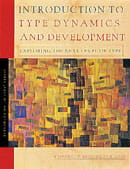
Type dynamics explores how our type preferences shape what is happening on and under the surface to explain how and why we react to situations differently. It explains why we feel our preferences change over our lifetime, even though they remain constant, with the probable path of maturation for each type.
Formats: eBook
Understand how type works
Introduction to Type and the Eight Jungian Functions

Deepen your understanding of MBTI theory for more dynamic application of MBTI results. Explore the mental function dichotomies, focusing on the extraverted and introverted expressions of each. The booklet starts with a clear description of the eight Jungian functions, then looks at applications of these functions and lastly looks at how to conduct a team analysis using these functions. Covers careers, communication, leadership, change, conflict and more.
Formats: eBook
Measure return
Measuring Results of MBTI® Type Training: ROI in action
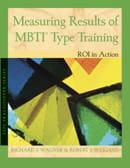
How do you measure and prove the value of MBTI training? This booklet includes an introduction to ROI and generalized discussion; exploration of the Wagner-Weigand model and theory; presentation of the ROI Survey and guidelines for its use; a sample case demonstrating actual application of the survey; and sample group exercises.
